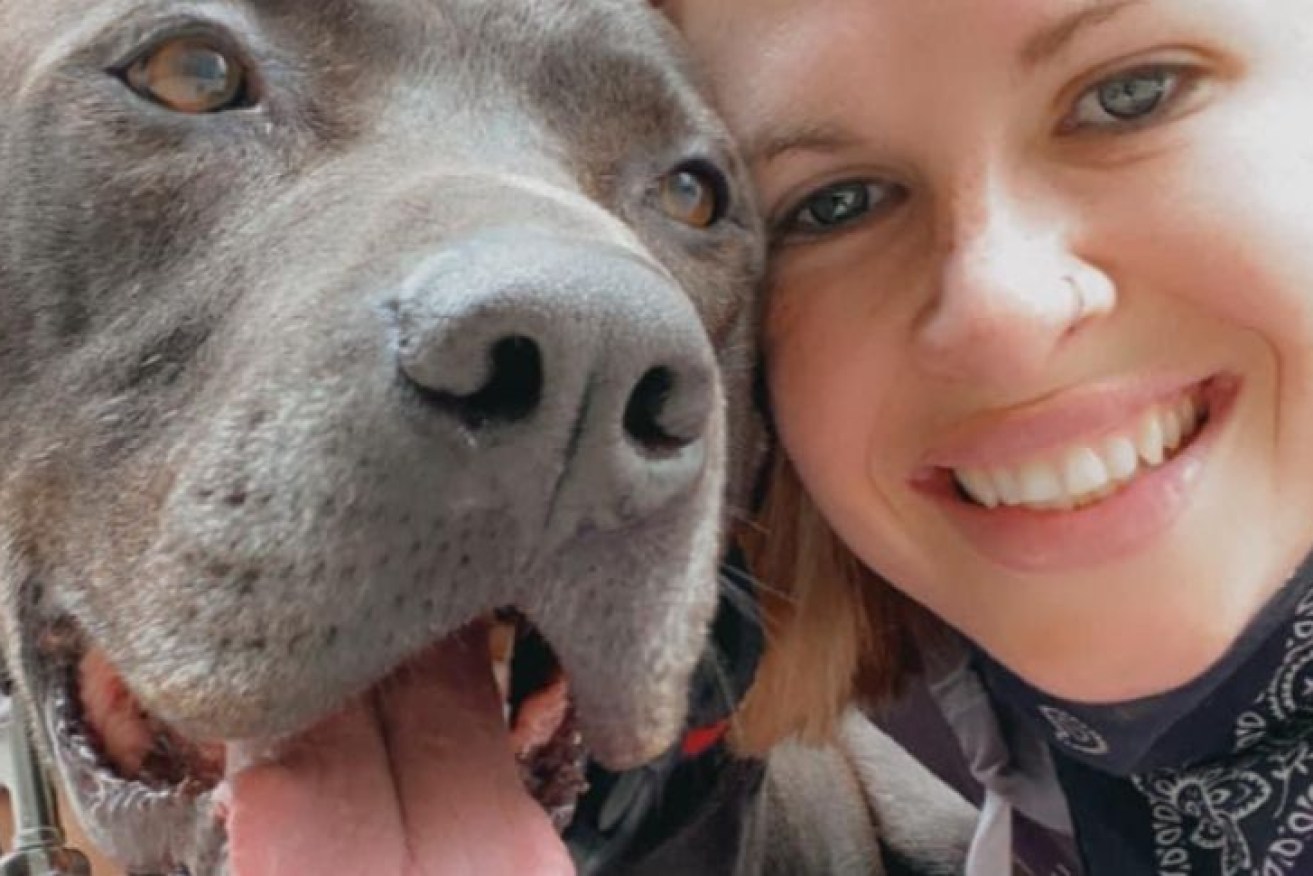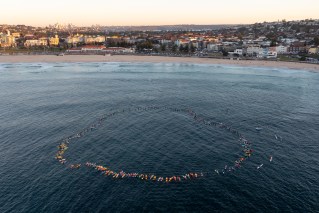Saving Sarge: Family admits defeat in bid to spare ‘dangerous dog’
A Sunshine Coast family will say goodbye to their beloved pet dog this this week after losing a 17-month court battle and spending tens of thousands of dollars to prevent it from being killed.

Kara Chaplin with Sarge (picture supplied).
Sarge, the American Staffordshire terrier, was seized by Sunshine Coast Council in April last year following three incidents with other animals, including one in 2016 which resulted in the death of a small dog.
After almost a year-and-a-half fighting the matter in court, Kara Chaplin said Sarge would be euthanased this week.
While council said it stands by its decision in the interest of “community safety”, a specialist Queensland dog trainer said there could be alternatives to euthanasia, with some dangerous dogs capable of rehabilitation.
Three strikes
In 2016, Chaplin was living in the Noosa region when both her dogs escaped her home and Sarge killed a small dog walking with its owner nearby.
In 2018, Sarge escaped while on a bike ride with Chaplin’s former partner and had a second run-in with a dog, while on the third occasion last year, he escaped and got into a fight with a large dog outside Chaplin’s home.
After this occasion, Sarge was seized by Sunshine Coast Council, where he remains to date.
Taking the fight to tribunal
Fighting to avoid Sarge’s killing, Chaplin took the matter to the Queensland Civil and Administrative Tribunal twice, but lost her appeal last week.
She said she has done everything she can to avoid Sarge being euthanased, including paying over $60,000 in fines and legal fees and building a Noosa Council approved enclosure to ensure he was safely restrained.
“[Euthanasia] should be the absolute last resort and that’s what we’ve been trying to fight,” Chaplin said.
“I am in Black Mountain on 36 acres with $7,000 worth of protection, my dog’s been gone for 17 months … is that not punishment enough?”
According to Chaplin, she has also had council’s own behavioural assessor conduct a temperament test on Sarge, mixing him with dogs, which he passed without any issue, and had him involved in “fearful reactive” training classes.
Family to give final farewell
When contacted by the ABC, Sunshine Coast Council said in a statement, the decision to euthanase Sarge “needed to be made to ensure the safety of the community and their pets”.
“On November 20, the Court of Appeal ruled that no errors of law had been made in the previous court decisions in relation to Council’s management of the euthanasia order,” the statement said.
“The Court dismissed Ms Chaplin’s application for leave to appeal …
“The order will be implemented, and Ms Chaplin has arranged to visit her dog prior to this occurring.”
Chaplin said she will visit Sarge, and was told her children can farewell him from behind a fence, before he is euthanased in three days time, as “he was a risk to children”.
“I have photos of him sleeping on my baby bump, photos of him beside my children the day I bought them home from hospital, he lights up when those children go for those visits,” she said.
“I just want my dog back, and to let my children say goodbye and give him a hug.”
Chaplin said she was informed by council workers if there was a protest about Sarge’s killing, or staff felt unsafe, her last visit would be revoked.
Euthanasia not always the answer
While Sunshine Coast Council has maintained its stance on the issue, having given Chaplin several chances to prove she could keep Sarge restrained, a Queensland specialist dog trainer said there could be other alternatives.
Martin Dominick has worked as a dog trainer for more than 30 years and has experience successfully retraining dangerous dogs
He said it all came down to the “type of aggression” the animal was demonstrating as to whether it would be rehabilitated.
“You really have to dig deep and try and find out what the trigger is,” he said. “Aggression is normal, a natural, instinctive process a dog uses to communicate with another dog … what we need to do is look at what type of aggression it is.
“Some dogs become so ingrained in their behaviours that they believe aggression is the only way that it can actually stay safe, so it might be based in fear.
“The whole desire in that instance is just to stay safe, when we’ve got predatory aggression, where the dog is quiet and hunts out dogs and continues to attack the dog once it is giving in, that’s different.”
– ABC / Tara Cassidy












